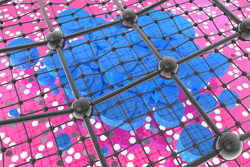Nanoscale dynamics
Nanotechnology has become very important for advancing science, and research is ongoing to perfect nanomaterials. The EU-funded project 'Dynamics in Nano-scale Materials Studied with Synchrotron Radiation' (Dynasync) investigated nanotechnology and nanostructures in many ways. It studied nuclear resonant scattering (NRS) experiments and advanced surface sensitive experiments to understand the dynamics behind thin films, multilayers and nanoparticles. This also shed light on structural changes during development of materials or thin films, as well as dynamic magnetic properties of nanostructures and magnetic storage density. The project team elaborated a system for investigating surface nanostructures using NRS. Moreover, a portable ultra high vacuum (UHV) chamber was developed to observe specific phenomena and measurements such as X-ray diffraction and photon correlation spectroscopy. Dynasync also developed another detector system that allowed it to successfully study the dynamics behind thin films, supported by synchrotron radiation studies and other experiments. In scientific terms, these advances opened a clear window to examine the close relationship between magnetism or diffusion and lattice dynamics, correlating the results with structure and morphology. This has important implications for the field of functional magnetic structures as new devices will depend not only on their structural, but also on their dynamic properties. Examples include nanoscale sensors and actuator systems that can now be tailored to the development of future functional nanoscale systems. Researchers expect the project to yield significant contributions to this field, stemming from the unique properties of the new experimental methods. A distinct advantage of the technique of NRS is that it is isotope-specific. This means that the signal is not affected by surrounding materials. The study results will enable scientists to study magnetic and dynamic properties of nanomaterials with very precise atomic resolution.







